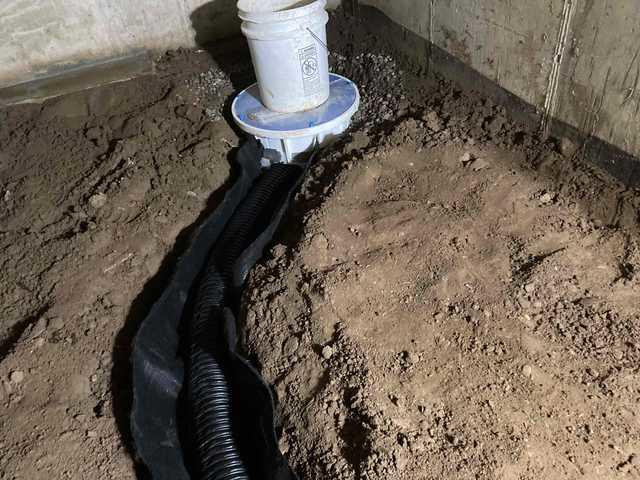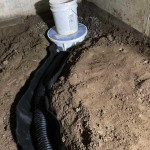Basements are prone to moisture infiltration due to their below-ground location and exposure to groundwater. Water intrusion can lead to various issues such as mold growth, structural damage, and musty odors, compromising the integrity and livability of the space. Basement drainage systems play a crucial role in managing groundwater and surface water, preventing water infiltration, and maintaining a dry and healthy basement environment. In this article, we’ll explore the importance of basement drainage systems, their components, types, installation process, and maintenance tips to keep your basement dry and protected.
Why Basement Drainage Systems Are Essential
Basement drainage systems are essential for several reasons:
- Preventing Water Damage: Basement drainage systems help prevent water damage by managing groundwater and surface water, preventing it from seeping into the basement and causing issues such as mold growth, wood rot, and structural damage.
- Protecting Foundation: Excess moisture around the foundation can lead to soil erosion and foundation settlement. Basement drainage systems help protect the foundation by directing water away from the structure, reducing the risk of damage.
- Improving Indoor Air Quality: Moisture buildup in basements can lead to high humidity levels and poor indoor air quality. Basement drainage systems help reduce moisture levels, creating a dry and healthy environment that is less conducive to mold and mildew growth.
- Enhancing Property Value: A dry and well-protected basement adds value to a property by increasing usable space and reducing the risk of costly water damage repairs in the future.
Components of Basement Drainage Systems
Basement drainage systems typically consist of the following components:
- Interior Drainage System: This includes a network of perforated pipes installed beneath the basement floor to collect groundwater and surface water. The collected water is then directed to a sump pump for removal from the basement.
- Sump Pump: A sump pump is a key component of a basement drainage system. It is installed in a sump pit or basin and is responsible for pumping out collected water from the basement to the exterior of the home or a drainage system.
- Exterior Drainage System: This includes components such as downspout extensions, French drains, and exterior waterproofing membranes installed around the perimeter of the foundation to manage surface water and prevent it from infiltrating the basement.
- Vapor Barrier: A vapor barrier, typically made of heavy-duty polyethylene or reinforced plastic, is installed on the interior walls and floor of the basement to prevent moisture from seeping through the concrete and into the living space.
Types of Basement Drainage Systems
There are several types of basement drainage systems available, including:
- Interior Drainage Systems: These systems are installed beneath the basement floor and collect groundwater and surface water through perforated pipes. The collected water is then directed to a sump pump for removal.
- Exterior Drainage Systems: These systems are installed around the perimeter of the foundation to manage surface water and prevent it from infiltrating the basement. Components may include French drains, downspout extensions, and exterior waterproofing membranes.
- Combined Drainage Systems: These systems combine elements of both interior and exterior drainage systems to provide comprehensive moisture management. They typically include interior drainage systems connected to a sump pump, along with exterior waterproofing measures.
- Crawl Space Drainage Systems: These systems are designed specifically for crawl spaces and may include encapsulation, interior drainage systems, and sump pumps to manage moisture and prevent water infiltration.
Installation Process of Basement Drainage Systems
The installation process of basement drainage systems may vary depending on the type and scope of the system. However, the general steps typically include:
- Assessment and Planning: The first step is to assess the condition of the basement and determine the most suitable drainage system based on factors such as the severity of water infiltration, soil conditions, and foundation type.
- Excavation: For exterior drainage systems, excavation is required to dig trenches around the perimeter of the foundation. This allows for the installation of drainage pipes, French drains, and waterproofing membranes.
- Installation of Drainage Components: Once the trenches are dug, drainage pipes, French drains, and waterproofing membranes are installed according to the specifications of the drainage system.
- Installation of Sump Pump: For interior drainage systems, a sump pump is installed in a designated sump pit or basin. The sump pump is connected to the interior drainage system and is responsible for pumping out collected water.
- Backfilling and Grading: After the drainage components are installed, the trenches are backfilled, and the soil is graded away from the foundation to ensure proper water drainage.
- Testing and Inspection: The completed drainage system is tested to ensure proper functionality, and any necessary adjustments or repairs are made.
Maintenance Tips for Basement Drainage Systems
To ensure the effectiveness and longevity of basement drainage systems, regular maintenance is essential. Here are some maintenance tips:
- Inspect and Clean Gutters and Downspouts: Keep gutters and downspouts free of debris to prevent clogging and ensure proper water flow away from the foundation.
- Check Sump Pump Regularly: Test the sump pump periodically to ensure it is functioning correctly. Clean the sump pit and remove any debris that may obstruct the pump.
- Monitor Interior Drainage System: Check the interior drainage system for signs of clogging or damage, such as standing water or damp spots on the basement floor.
- Seal Cracks and Gaps: Inspect the foundation walls and floor for cracks and gaps and seal them with waterproofing sealant to prevent water infiltration.
- Maintain Exterior Drainage System: Inspect the exterior drainage system for signs of damage or deterioration and make any necessary repairs or adjustments.
- Ensure Proper Grading: Maintain proper grading around the foundation to ensure that water drains away from the structure.
Basement drainage systems are essential for managing groundwater and surface water, preventing water infiltration, and maintaining a dry and healthy basement environment. By understanding the importance of basement drainage systems, their components, types, installation process, and maintenance tips, homeowners can take proactive measures to protect their basements from moisture damage and enjoy a dry, comfortable living space for years to come. Whether it’s installing an interior drainage system, an exterior drainage system, or a combination of both, investing in a basement drainage system is an investment in the long-term integrity and value of your home.
Contact the Professionals at A.M. Shield Waterproofing Today! (516) 294-8400





